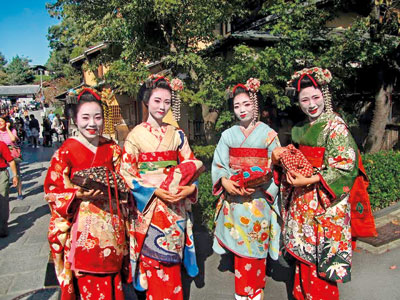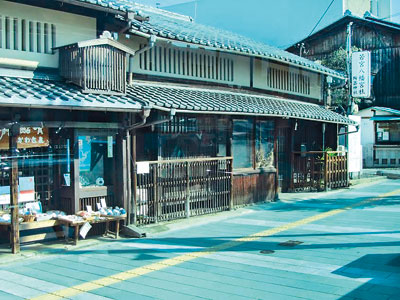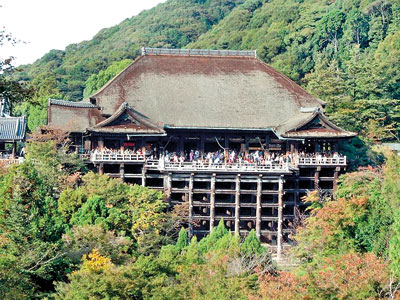Kyoto: Japan’s ancient heart and soul
 If you get the opportunity of travelling to Japan, by all means visit the modern cities like Tokyo or Osaka if you want to experience 21st century touristy stuff – huge flashing neon signs and impressive skyscrapers, sleek new cars and bullet trains, scores of busy people scurrying about their activities like an army of ants.
If you get the opportunity of travelling to Japan, by all means visit the modern cities like Tokyo or Osaka if you want to experience 21st century touristy stuff – huge flashing neon signs and impressive skyscrapers, sleek new cars and bullet trains, scores of busy people scurrying about their activities like an army of ants.
But if you want to see Old Japan and get a glimpse of what life used to be like in this ancient country, make your way to Kyoto.
While it is true that Kyoto too has progressed and now has modern universities and thriving industries – after all, this is the birthplace of Nintendo, a city with an ultra-modern railway station to which you can travel down from Tokyo in a bullet train – it is still the traditional and age-old Kyoto that attracts visitors. Walk down an old street of shops (shotengai) and you can admire old fashioned specialty shops of tea merchants, tofu sellers, confectioners and pickle vendors – as well as traditional narrow-fronted wooden townhouses (machiya). In the course of your walk you may come across an elaborate and colourful temple or a sublime Zen garden created with meticulously raked sand and mind-focusing rock formations.
This was the capital of imperial Japan for over a thousand years, the city that gave birth to cultural traditions such as flower arrangement (Ikebana) and the tea ceremony (Sadou). Kyoto fortunately was spared the American bombing that destroyed so many other Japanese cities during the Second World War.
It is estimated that Kyoto today has over a thousand Buddhist temples. There are masterpieces of religious architecture like Kinkaku-ji,the splendid tiered Golden Pavilion which is surrounded by manicured gardens and Kiyomizu-dera,the magnificent wooden temple supported by pillars on the slope of a mountain. There are other temples which are famed for their surroundings rather than their buildings, temples which have within their precincts some of the world’s most sublime gardens, like the ‘dry garden’ Zen masterpiece at Ryōan-ji and the famous moss garden and golden pond of Saihō-ji.
The city, whose ancient historic monuments have been recognised by UNESCO with World Heritage status, also has many Shintoō shrines – monuments to Japan’s indigenous faith. One of the largest of these, Heian-jingu, has a magnificent main entrance that was modelled on the gate of Kyoto’s former imperial palace.

Wooden Townhouses (Mainichi)
Kyoto is also famous for its Geisha, the highly trained women who over the centuries made entertainment a fine and expensive art. If you are fortunate, you may meet one – or a group –while exploring the network of narrow cobble-stoned lanes in the Gion district. Wearing elaborate kimonos, with meticulously applied white make-up on their faces and necks, these ladies represent a link with the past when the Geisha were well respected professionals in Japanese society.
The city is located about 500 km. southwest of Tokyo in a lush valley surrounded by three green mountains. Late spring (when the cherry blossom trees are blooming) or early autumn (when the leaves are turning into beautiful yellows and reds) are the best times to visit – because summer months can be very hot and Kyoto can get a bit crowded with local and international visitors.
And while in Kyoto, you may want to follow in the footsteps of the city’s famous philosophers and great thinkers by taking a mindful and meditative stroll along the Philosopher’s Path (Tetsugaku no michi) that runs for two kilometres by the side of a canal lined with maple and cherry trees.
It is all part of experiencing the heart and soul of Kyoto.

Mountainside temple: Kiyozumi-Dera


